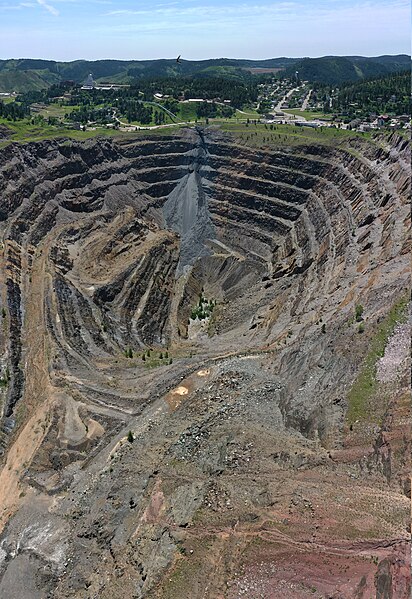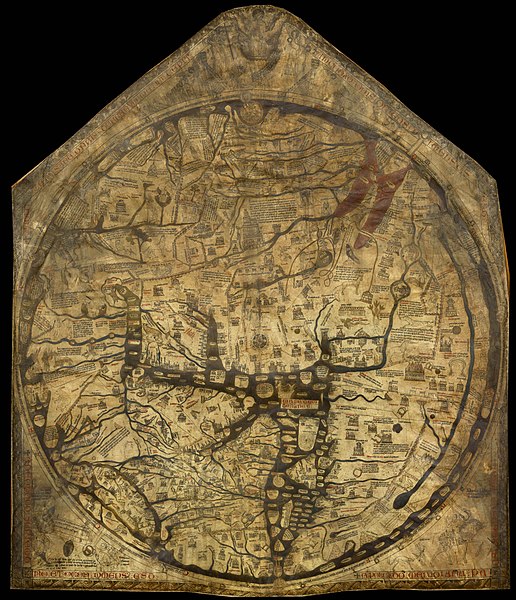Mines have long been at the heart of economic booms, fueling industries and transforming communities with the wealth they provided. From precious metals to essential minerals, these once-thriving sites were hubs of activity that shaped economies and histories around the world. However, as resources dwindled or environmental and social costs became too great, many mines were abandoned, leaving behind a legacy of both prosperity and hardship. Today, these disused mines stand as reminders of the powerful impact of resource extraction, offering lessons in sustainability and the impermanence of industrial success. Here are 18 disused mines that once played pivotal roles in economic growth and innovation.
Homestake Mine, South Dakota, USA

The Homestake Mine, located in Lead, South Dakota, was once the largest and deepest gold mine in the Western Hemisphere. Opening in 1876 during the Black Hills Gold Rush, it quickly became a symbol of prosperity. The mine’s incredible yield, over 40 million ounces of gold, made it one of the most productive gold mines in history. However, as gold prices fluctuated and extraction costs soared, operations ceased in 2002. Today, its vast tunnels have found new life as the Sanford Underground Research Facility. Scientists now study particle physics where miners once toiled for riches. This transformation highlights the adaptive reuse of a space that once fueled economic development in the region.
Kimberley Mine (Big Hole), South Africa

Known as the “Big Hole,” the Kimberley Mine in South Africa was a major hub for diamond mining during the late 19th century. Dug entirely by hand, the mine yielded over 14 million carats of diamonds. This rush of wealth helped establish Kimberley as a key player in the global diamond market. However, the mine’s operations declined by 1914 as diamond deposits dwindled. The site is now a major tourist attraction, showcasing the labor-intensive methods of the past. Its historical significance is also a reminder of the human cost of mining wealth. The Big Hole remains a monument to an industry that shaped a nation.
Cornwall Tin Mines, United Kingdom

The tin mines of Cornwall were at the heart of Britain’s Industrial Revolution, with their history stretching back over 4,000 years. By the 19th century, Cornwall was producing half the world’s tin. These mines not only spurred local economic growth but also powered Britain’s global influence. Yet, with the rise of cheaper tin sources overseas, Cornwall’s mines became uneconomical and shut down in the 20th century. Today, sites like Geevor and Levant are UNESCO World Heritage Sites. They serve as poignant reminders of the boom-bust cycles of resource-dependent economies. Visitors can explore preserved machinery and learn about miners’ challenging lives.
Chuquicamata Mine, Chile

Chuquicamata, one of the largest open-pit copper mines in the world, has a history dating back over a century. Located in the Atacama Desert, its copper output once fueled Chile’s economic rise. The mine was responsible for significant technological advancements in open-pit mining. Despite its success, environmental concerns and resource depletion led to the pit being closed in the 2010s. Operations have shifted to underground mining, but the open-pit site remains a striking relic. Its scale is a testament to human engineering and ambition. Chuquicamata’s legacy underscores the delicate balance between economic development and environmental preservation.
Picher Lead and Zinc Mine, Oklahoma, USA

The Picher Mine in Oklahoma was a key supplier of lead and zinc during both World Wars. This mine helped the United States become a global leader in these essential wartime materials. The economic boom, however, came at a severe environmental and health cost. Toxic waste piles, known as “chat,” contaminated the local area, making it one of the most polluted places in the U.S. The town of Picher was eventually abandoned due to health hazards and the risk of sinkholes. The site is now a cautionary tale of unchecked industrial growth. Its ruins stand as eerie reminders of a lost community.
Broken Hill, New South Wales, Australia

Broken Hill is one of Australia’s most famous mining towns, primarily known for its silver, lead, and zinc production. Founded in the 1880s, the mine quickly became a cornerstone of the Australian economy. The wealth extracted from Broken Hill funded significant national infrastructure projects. However, after more than a century of operations, ore deposits were largely depleted. While mining continues on a smaller scale, the town has reinvented itself as a heritage and tourism destination. The mine’s unique slag heaps and headframes now attract photographers and history enthusiasts. Broken Hill’s story reflects resilience in the face of economic transition.
Sudbury Nickel Mine, Ontario, Canada

Discovered in 1883, the Sudbury Basin in Ontario became one of the world’s leading nickel producers. The mining boom transformed the area into a hub of industry and innovation. Nickel from Sudbury played a crucial role in the global economy, particularly during wartime. Yet, decades of intensive mining left the region environmentally scarred, with acid rain and barren landscapes. Modern reclamation efforts have begun to repair the damage, turning the area into an ecological case study. Despite its challenges, Sudbury remains an example of the profound economic impacts of resource extraction. The abandoned parts of the mine stand as historical markers of a bygone era.
Serra Pelada, Brazil

Serra Pelada became a legend of Brazilian mining during the 1980s gold rush. Thousands of workers, known as garimpeiros, dug into the mountainside by hand in search of fortune. The chaotic and dangerous conditions made it a spectacle of human determination. Despite yielding significant gold, corruption and exploitation marred its history. Operations ceased as the deposit dwindled, leaving behind a desolate crater. Today, Serra Pelada is both a symbol of economic hope and a cautionary tale. Its abandoned site serves as a stark reminder of the human cost of gold fever.
Freiberg Silver Mines, Germany

The Freiberg mines were among Europe’s most important sources of silver during the Middle Ages. They fueled the economy of Saxony and supported advancements in mining technology. The wealth from these mines financed significant cultural and architectural achievements in Germany. However, as veins were exhausted, operations ceased by the late 19th century. Today, the mines are a UNESCO-listed site and an educational destination. Visitors can tour the medieval tunnels and learn about the region’s mining heritage. Freiberg’s story exemplifies how resource wealth can shape societies.
Ok Tedi Mine, Papua New Guinea

The Ok Tedi Mine began operations in the 1980s, producing gold and copper vital to Papua New Guinea’s economy. Despite its economic benefits, the mine became infamous for severe environmental damage. The dumping of mine waste devastated local ecosystems and communities. Operations continued until the early 2000s, but public pressure forced changes to mining practices. The abandoned sections of the mine now highlight the complex trade-offs of resource extraction. Nearby communities struggle with the long-term consequences of environmental degradation. Ok Tedi remains a controversial symbol of development’s costs and benefits.
Boliden Mine, Sweden

Boliden Mine in Sweden was a significant source of gold, silver, and copper during the early 20th century. Opened in 1924, it propelled the surrounding region into economic prominence. The ore from Boliden was so rich that it became a model for efficient mining operations. However, the deposits were depleted by the 1960s, forcing its closure. Today, Boliden is better remembered as the origin of one of Sweden’s leading mining companies. The abandoned site has been repurposed as an industrial heritage area, attracting history enthusiasts. Boliden’s story highlights the fleeting nature of resource-dependent economies.
Nauru Phosphate Mines, Nauru

Once referred to as “Pleasant Island,” Nauru experienced an economic boom thanks to its rich phosphate deposits. Phosphate mining in the 20th century brought immense wealth to the island, transforming it into one of the world’s richest per capita nations. However, reckless extraction left the land barren and unsustainable for agriculture or habitation. By the 1990s, the phosphate reserves were exhausted, and the economy collapsed. Today, Nauru serves as a cautionary tale of unsustainable mining practices. The island’s environmental devastation is a stark contrast to its former prosperity. The abandoned mines are now a haunting reminder of what was lost.
Centralia Coal Mine, Pennsylvania, USA

The Centralia Mine was once a thriving coal mine that fueled local industry and power. Opened in the mid-19th century, it helped Centralia prosper as a mining town. However, an accidental fire in 1962 ignited underground coal seams, causing a catastrophic and uncontrollable blaze. The fire still burns today, rendering the area uninhabitable due to toxic fumes and sinkholes. Most of Centralia’s population has since relocated, leaving the town nearly deserted. The mine and its fiery legacy have become infamous symbols of the dangers of mining. Today, the abandoned site attracts curious visitors intrigued by its ghostly atmosphere.
Witwatersrand Gold Mines, South Africa

The Witwatersrand Basin was the epicenter of South Africa’s gold boom, contributing to its rise as a global economic power. Gold mining began here in the late 19th century, and the region soon accounted for nearly half of the world’s gold supply. This wealth helped build Johannesburg, transforming it into a major city. However, by the late 20th century, declining ore grades and rising costs led to widespread mine closures. Abandoned shafts now dot the landscape, with environmental pollution an ongoing issue. The legacy of Witwatersrand is a mix of economic triumph and ecological challenges. Its impact on South Africa’s history remains undeniable.
Cerro Rico, Bolivia

Cerro Rico, known as the “Mountain of Silver,” was the lifeblood of the Spanish Empire during its colonial rule in South America. The mine at Potosí provided vast amounts of silver, fueling European economies in the 16th and 17th centuries. Despite its riches, the mine was notorious for its harsh working conditions and high mortality rates. By the 19th century, silver production began to decline as resources were exhausted. Today, Cerro Rico is a UNESCO World Heritage Site, although small-scale mining continues in its tunnels. The mountain’s eroded peak serves as a stark reminder of centuries of extraction. Its history is both a tale of wealth and exploitation.
Pilgrim’s Rest Gold Mine, South Africa

Pilgrim’s Rest was the site of one of South Africa’s first gold rushes in the 1870s. The mine’s success spurred rapid settlement and economic growth in the region. Over time, larger gold fields overshadowed Pilgrim’s Rest, leading to its decline. By the mid-20th century, mining ceased, and the town was preserved as a heritage site. Today, Pilgrim’s Rest offers visitors a glimpse into the gold rush era with its well-preserved architecture and mining equipment. The site serves as both a tourist attraction and a reminder of a bygone era. Its legacy lies in its contribution to South Africa’s early mining industry.
Kolmanskop Diamond Mine, Namibia

Kolmanskop in Namibia was a diamond boomtown in the early 20th century, built in the middle of the Namib Desert. The mine produced vast quantities of diamonds, attracting workers from around the world. However, richer diamond fields further south drew investment away, and Kolmanskop was abandoned by the 1950s. Today, sand-filled buildings and desert winds dominate the ghost town, creating an eerie yet photogenic site. Tourists visit to explore its unique blend of nature reclaiming human structures. The abandoned mine is a haunting reminder of the impermanence of wealth and industry. Its stark beauty contrasts with its vibrant past.
Mount Morgan Mine, Queensland, Australia

Mount Morgan was once one of the richest gold mines in Australia, operating from 1882 to 1981. The mine produced not only gold but also significant quantities of copper, contributing to Queensland’s economy. However, environmental damage, including acid mine drainage, has left a lasting scar on the region. Efforts to rehabilitate the site are ongoing, but challenges remain. Today, the mine’s ruins are a popular tourist destination, offering a glimpse into its golden era. Mount Morgan’s history reflects both the wealth and the environmental costs of mining. Its story continues to resonate in discussions of sustainable resource management.
This article originally appeared on Rarest.org.
More From Rarest.Org
Maps have long been more than just tools for navigation, they are windows into the knowledge, ambitions, and creativity of the people who made them. Some historic maps are so rare that only a handful of copies, or even a single version, survive today. Read more.
Cathedrals stand as remarkable symbols of faith, history, and architecture, with many dating back thousands of years. These awe-inspiring structures were often built to honor religious figures or significant events, showcasing the artistry and devotion of their creators. Read more.
Comic strips have been a cornerstone of visual storytelling for over a century, blending art and humor to capture moments in time. For collectors, original comic strip art represents a unique intersection of cultural history and artistic innovation. Read more.



